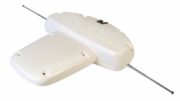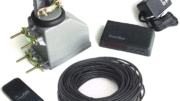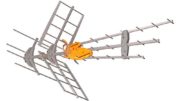I’ve written this story before. I wrote it in 2019. I wrote it in 2020. And every year, I come in with hope. But, here’s the harsh story: If you are looking for a massive bump in the amount of 4K over-the-air content in 2021, there are two chances: slim and none. And, if that’s not enough, Slim is heading out the door.
A little bit of background
The television standard in this country is called ATSC 1.0. It’s the first digital television standard in this country and it took over for the old standard, called NTSC, in 2009. Digital television was created in order to give people a higher level of quality than they had before, using the same broadcast frequencies. It didn’t guarantee that ATSC broadcasts were high definition, though. Just because a signal is digital doesn’t mean it’s high-definition.
There’s a new standard, called ATSC 3.0. [Let’s not dwell on what happened to ATSC 2.0.] The new standard was designed for the same reason: to allow for the same broadcast frequencies to be used, with more capabilities. ATSC 3.0 will allow for on-demand content, 4K content, and even targeted advertising. But, it’s not a guarantee that everything will go to 4K, just as ATSC 1.0 is no guarantee of high-def.
Where we stand with ATSC 3.0
ATSC 3.0 has been in limited testing since 2017. The FCC ruled at that time that test broadcasts could occur at any time, as long as the ATSC 3.0 content was also broadcast on a regular ATSC 1.0 channel. Since then, tests have been slowly taking place in several cities. 2020 was supposed to see up to 60 cities with ATSC 3.0 test channels. That didn’t happen because, well… you know.
Inside the FCC, the agency that control this whole process, ATSC 3.0’s biggest advocate has been Chairperson Ajit Pai. Mr. Pai has moved aggressively to make ATSC 3.0 a reality. He’s been accused of being influenced by Sinclair, one of the largest operators of broadcast television stations in the country. Sinclair, in turn, is interested in ATSC 3.0 because they believe that the new technology will help them sell more relevant ads.
But, there’s something to consider here. Mr. Pai’s last day at the FCC is January 20th. That’s right, five days from now. The future of the FCC is, at this writing, uncertain. By law, the commission must have two Democrats and two Republicans. The FCC itself is part of the Executive Branch. Therefore, the position of chair generally belongs to a commissioner who belongs to the same party as the President.
So where does ATSC 3.0 go from here?
There is not likely to be any change in the FCC until there is a new chair. And, as I write this, it’s not clear when that will be. Until there is a full 5-person commission, don’t expect any change on anything in the world of radio, television, cellular, or internet.
So, any changes to the broadcast landscape are probably not going to happen for a while. I do expect that we’ll see growth in ATSC 3.0 test broadcasts. We’ll see everyone who was planning to do it in 2020 to continue their plans into 2021.
The real question is whether or not we’ll see the hardware to receive those broadcasts. There have been a very small number of televisions with ATSC 3.0 tuners built so far. An even smaller number are software-upgradeable to ATSC 3.0. More importantly, we will hopefully see the affordable converter boxes we expected last year. Development has been slow on this stuff, and we all know why. Let’s hope that’s all behind us, sooner than later.
Remember, without ATSC 3.0 broadcasts, without ATSC 3.0 receivers, there is no 4K over-the-air TV. Simple as that.
My forecast, in as few words as possible
Here it is:
I’ll be writing another article just like this one in another year.
Care to take that bet? Leave a comment below and let’s talk about it.





